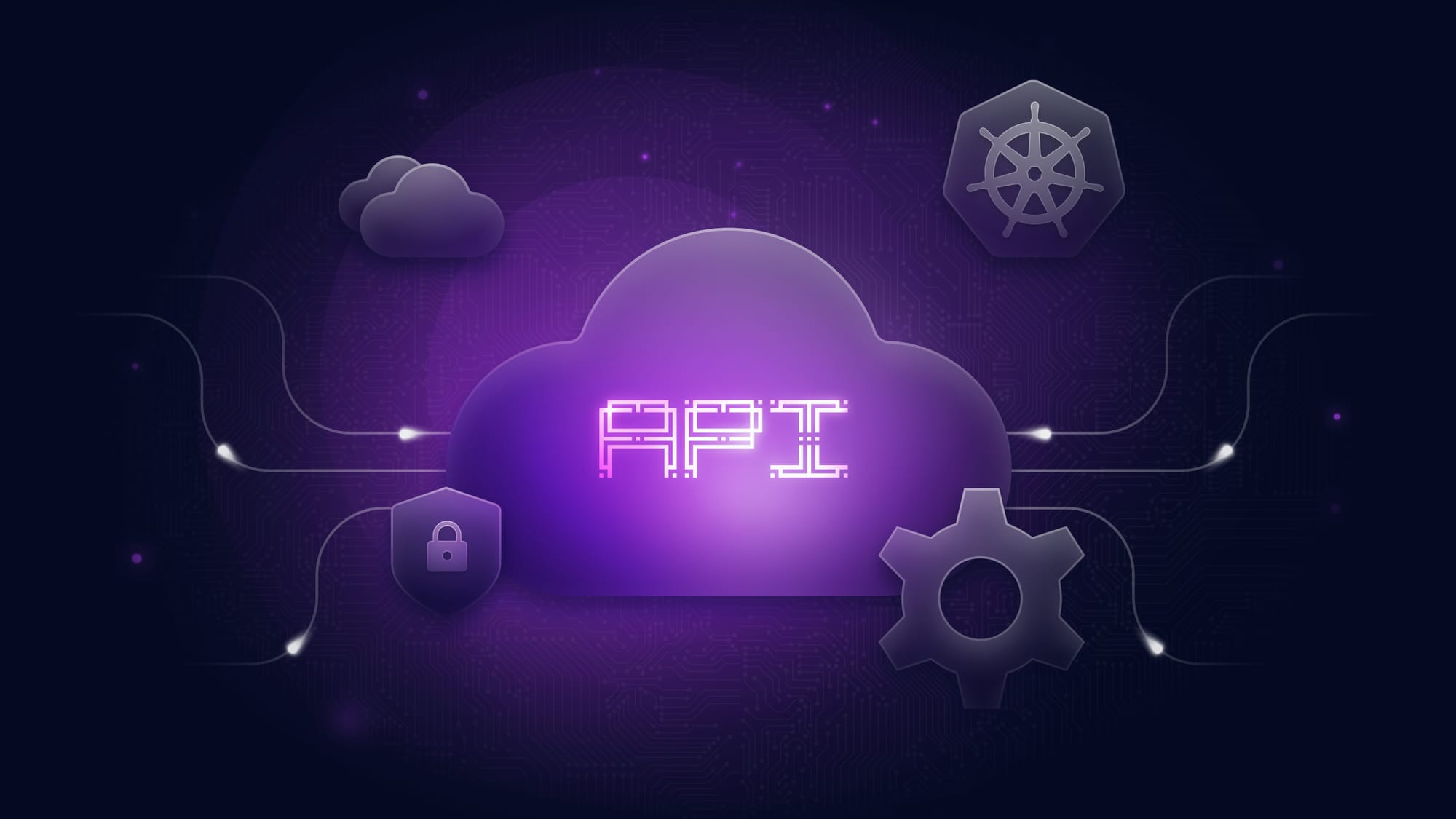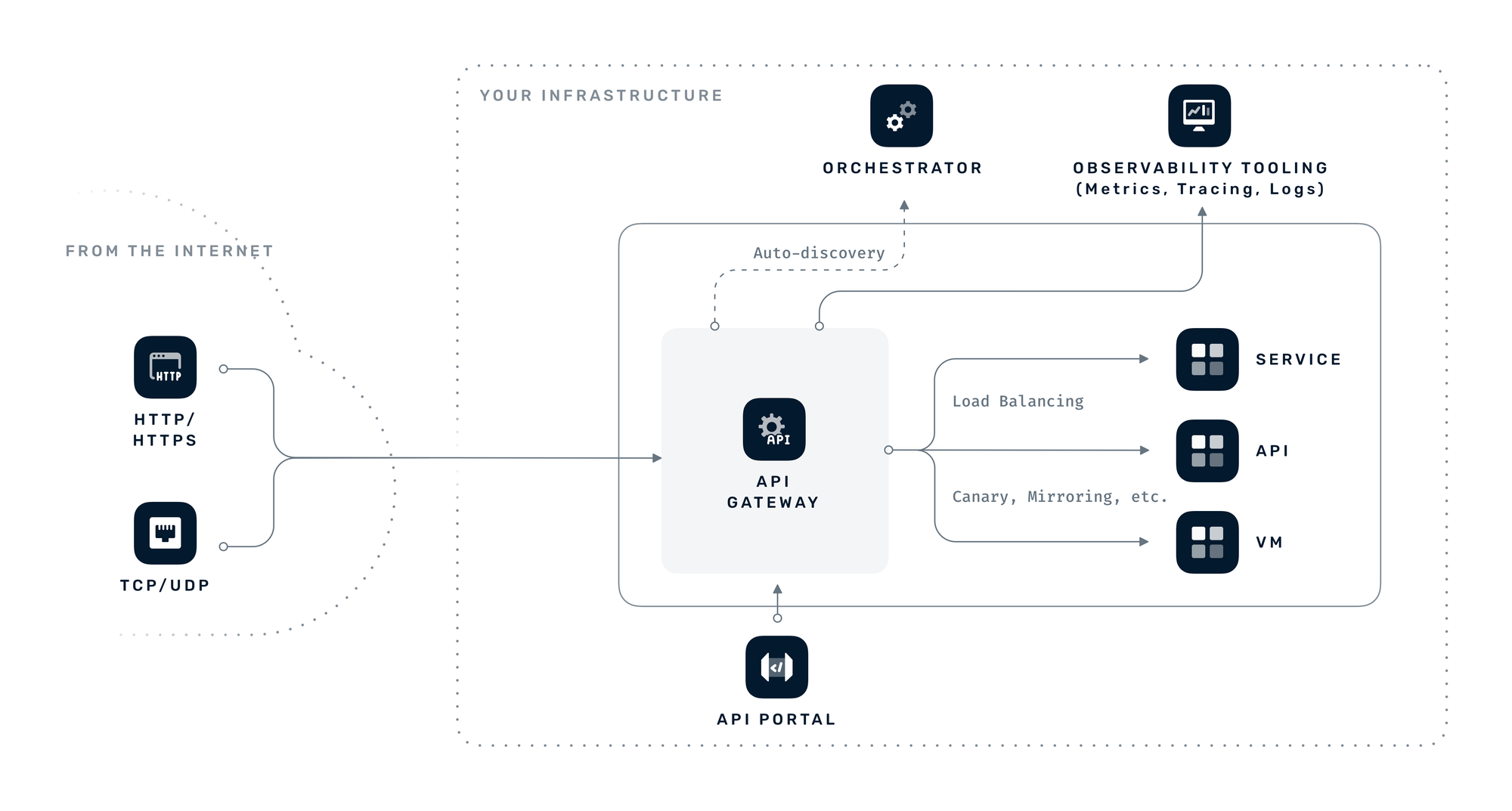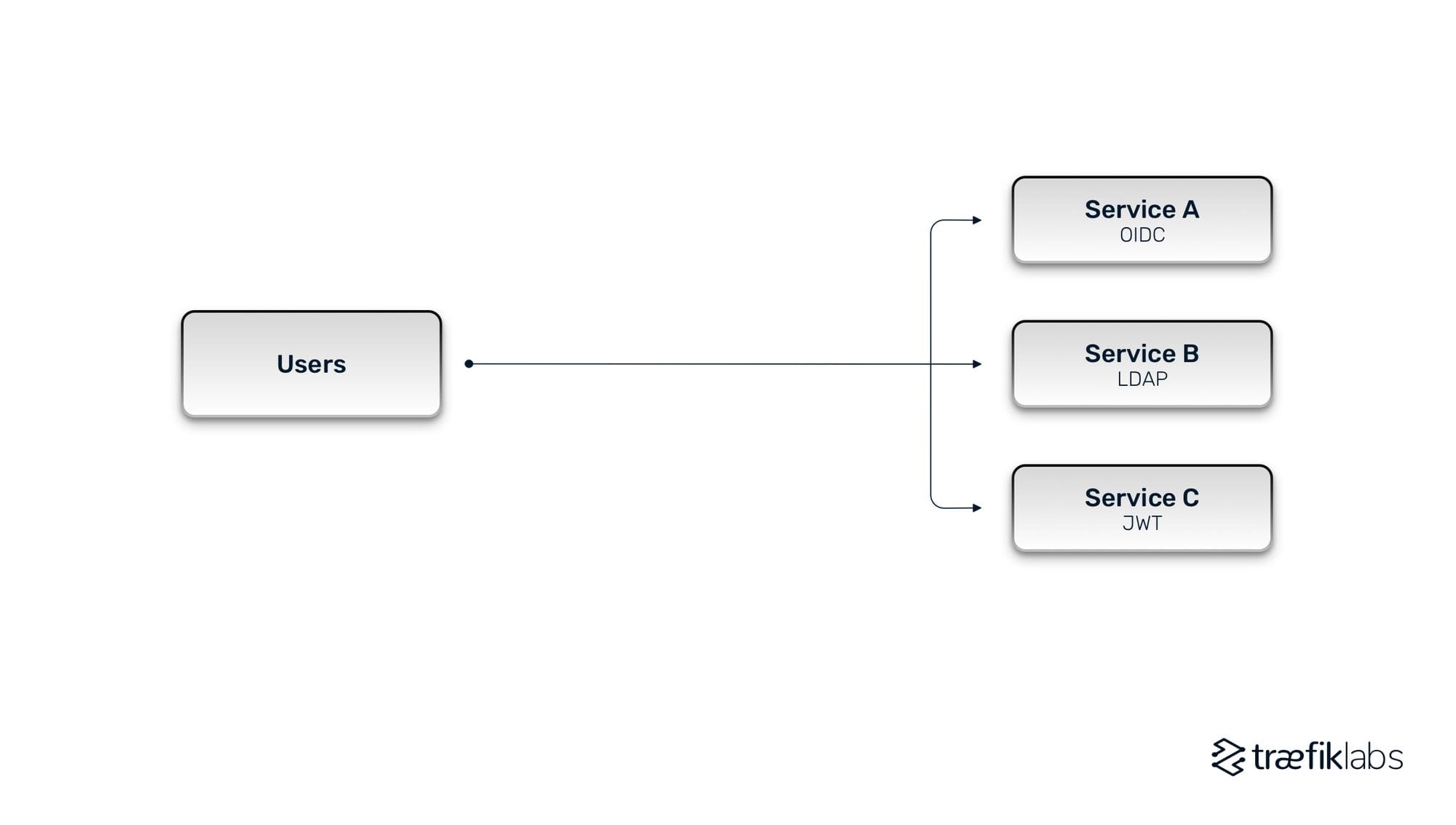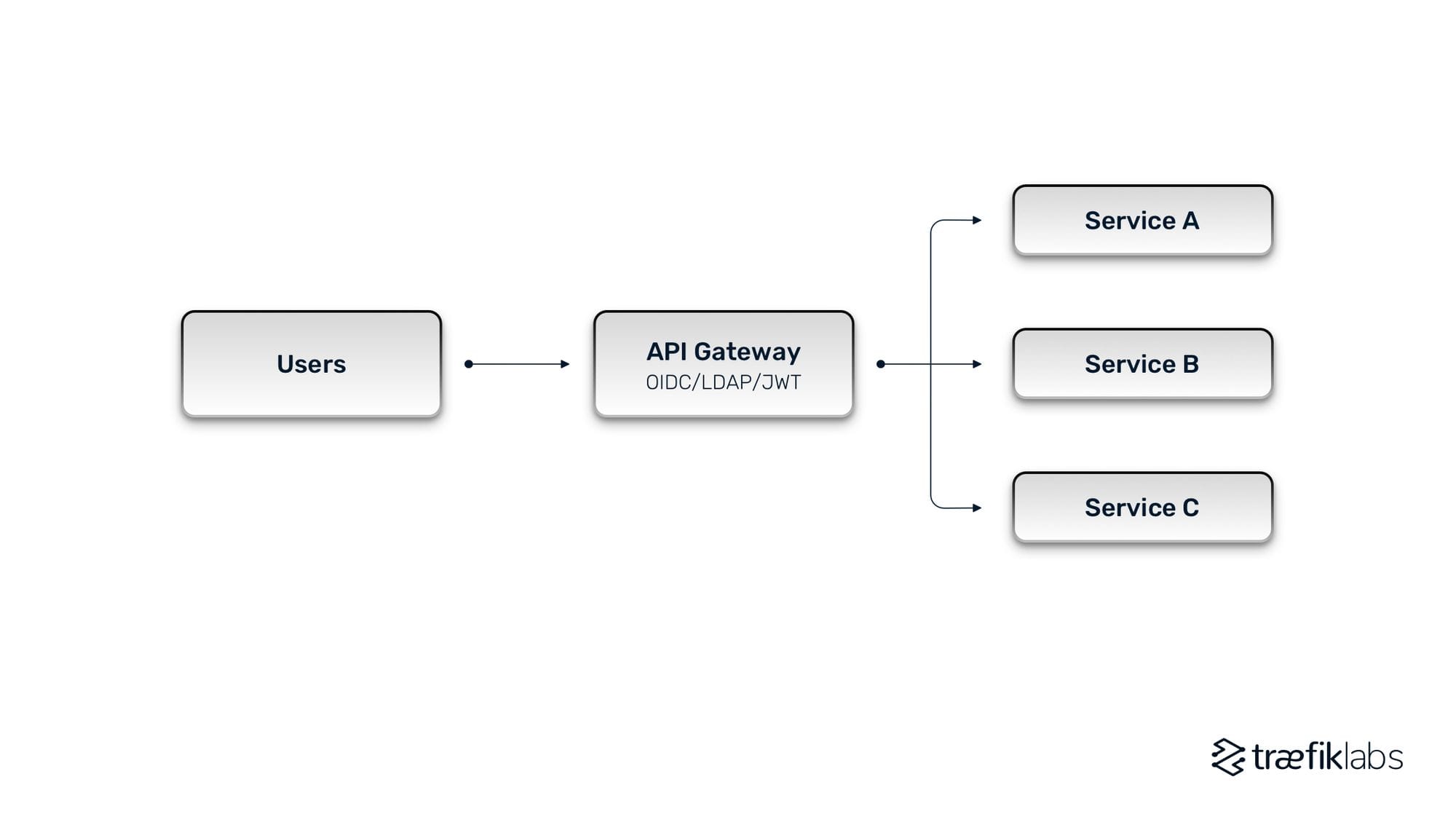The API Gateway Model: Centralizing Control in Complex Microservices Architectures

Imagine an organization with hundreds or even thousands of microservices, each responsible for a specific function or feature. Routing requests across these services, managing authentication and authorization, load balancing traffic, and ensuring system resilience can quickly become a daunting task.
Mortgage provider Amerisave, with a presence in 49 states, 5,000 employees, and on-prem legacy infrastructure with more than 150 servers handling up to 40,000 requests per second, had to consider that in its migration to microservices using Docker Swarm. Without centralized control of routing, security, and other distributed functions, Amerisave and organizations like it risked introducing silos, inconsistencies, and potential security vulnerabilities, ultimately making it more difficult to scale and adapt to changing business needs.
One such solution that exemplifies the principles of centralized control of distributed functions is the use of an API gateway.
The API Gateway Model
The API gateway model provides companies with a centralized way to manage routing, authentication, and authorization. This model enables developers to offload the complexities of routing and security to DevOps, platform, or security teams, allowing developers to focus on building the applications. Let’s discuss the architecture of this model.
But first, what is an API gateway?
An API gateway is a single entry point into your microservices that routes your clients’ API requests to the backend microservices in your network. An API gateway functions very similarly to a reverse proxy for standard user-facing applications in that it routes incoming requests to the correct API in the backend.
Considering we have covered this already in our glossary, I won’t be going in more depth here. If you need a refresher on the basics, please see this API Gateway glossary article.

Because API gateways live in front of all services and DevOps teams are able to centralize control, the API Gateway model is far more efficient than models that require, for example, authentication and authorization to be configured in each service.
There are numerous benefits to the API gateway model, a few of which we’ll explore here.
Improved Routing, Load Balancing, and System Resilience
At the core of centralized control lies the ability to consolidate routing logic and load balancing mechanisms. Because they’re the single entry point for all external traffic, API gateways simplify routing in complex architectures and eliminate the need for individual microservices to handle routing logic independently, ensuring consistency, reducing redundancy, and facilitating easier maintenance and updates.
Additionally, modern, cloud native API gateways offer dynamic service discovery with automated default configurations, advanced load balancing (blue/green, canary, etc.), and intelligent routing based on factors such as resource utilization, response times, and health checks. Add rate limiting and circuit breaking to this list, and you can see why API gateways are effective tools for streamlining the management of complex architectures, fostering scalability, and enhancing system resilience.
Better Authentication and Authorization Management
A core reason companies move towards an API gateway model is security. Not only do API gateways tend to be compatible with modern authentication and authorization protocols (OIDC, JWT, etc.), but they also streamline security management by centralizing access control and even helping to automate it.
Managing access control at the service level, in contrast, requires tedious manual configuration, increases the risk of human error, and opens you up to attacks. Add to this that most companies have hundreds, if not thousands of microservices and APIs to expose, and you can see how embedding access control into each service is not scalable and overly burdensome on developers.

By enforcing authentication and authorization policies at the API gateway level, you’re able greatly simplify the configuration and maintenance of new and existing access control policies. And with everything in one place, managed by one team, policies can be enforced consistently (and even automatically with dynamic service discovery and configuration). This leaves less room for human error, reduces development overhead, and minimizes vulnerabilities from inconsistent implementations across different services.

If you choose a modern API gateway for your stack, you’ll also be able to take advantage any authentication and authorization protocol—including LDAP, JWT, OAuth, OpenID Connect, HMAC, and API keys—as well as direct integrations with identity providers (IdPs). The best gateways also support advanced authorization mechanisms, such as Open Policy Agent (OPA), which allow organizations to implement fine-grained access control policies based on complex rules and contextual data.
Streamlined Change Management
As new instances of microservices are introduced or existing ones are scaled up or down, they have to be configured. Whether it’s registering, routing, load balancing, or securing the service, change management is no small feat.
And the more decentralized and manual this process, the more likely you are to have issues. With the API gateway model, however, this can all happen at a single point, ensuring optimum consistency and control.
The best API gateways take this even further and automate service discovery and default configuration. As your team spins up new services or makes changes to existing ones, the API gateway gets to work. New services are registered and the default routing, load balancing, rate limiting, access control, and other defaults are applied dynamically. The best solutions are able to deploy these changes dynamically without restarts or service disruptions.
This dynamism ensures teams remain agile and responsive to changing business needs, which is crucial in today's fast-paced business environment.
Comprehensive Monitoring and Observability
Monitoring and observability are essential. Whether it's identifying performance bottlenecks, detecting issues before they happen, or ensuring compliance with service-level agreements, the ability to monitory your system is a must.
As architectures become more complex, having a centralized tool that gathers and monitors system data becomes all the more important. This is where an API gateway model can help.
Monitoring traffic flow, load balancing, and overall system health is much more challenging without a centralized point through which all this data flows. And considering how API gateways help you centralize routing, security, etc., observability is no different.
API gateways offer some built-in metrics that cover a wide range of dimensions. These can include request rates, response times, error rates, and more. They may also provide built-in dashboards or the ability to visualize data using third-party observability tools, such as Prometheus, Grafana, and Elasticsearch.
This is nice, but modern API gateways take observability to the next level. They are increasingly aligned to OpenTelemetry (OTel), a standard for dynamic systems telemetry data that replaces multiple vendor-specific solutions. OTel unifies disparate data, ensures consistent instrumentation across various programming languages, and offers enhanced insights into application use, health, and performance.
For example, API gateways with best-in-class OTel support can illuminate request patterns, authentication and authorization events, system-level events, and issue correlations. You may even have the ability to remove or mask GDPR-related Personally Identifiable Information (PII) in logs to comply with security requirements. This level of visibility and control enables organizations to troubleshoot issues more effectively, identify potential security threats, and optimize their applications performance.
Integration with Orchestration Tools
The last benefit of the API gateway model we’ll discuss here is the stitching together of complex, often disparate, environments. As organizations move from monolithic to microservices architectures, they often need to manage routing, security, et al. across hybrid cloud, multi-cloud, and mulit-orchestrator deployment models.
This is no easy feat. And the larger the company, the more you’re likely have have different teams working in different environments. So how can you tame such a complex beast?
API gateways can be used as a unifying layer, ensuring consistent control and governance over distributed systems, regardless of the underlying infrastructure or orchestration platform. One consideration here is that not all API gateways are natively compatible with all orchestrators.
This is another situation where modern, cloud native API gateways shine. Regardless of your orchestrator or deployment model, the best gateway solutions will behave the same in all instances. They don’t require you to operate them differently depending on the environment, and they might even be able to communicate with each other to further centralize your operations.
With this level of flexibility, your organization can grow and change, being responsive to it’s needs today and in the future, without the pressures of vendor lock-in or imminent rip and replace headaches.
It’s Time to Centralize Control
The API gateway model has clear advantages, particularly as infrastructures scale and become more complex. Centralizing critical functions, such as routing, security, load balancing, and observability can have profound effects on your organization. Efficiency, consistency, agility, and scalability can all increase dramatically when an API gateway model is implemented well (and when the API gateway you choose is right for you).
Modern, cloud native API gateways magnify all the benefits of the API gateway model. From dynamic configurations to native support for all orchestrators and deployment models, the best of the best API gateways tame complexity and make it possible to scale how and where you need.
Are you ready for that?




